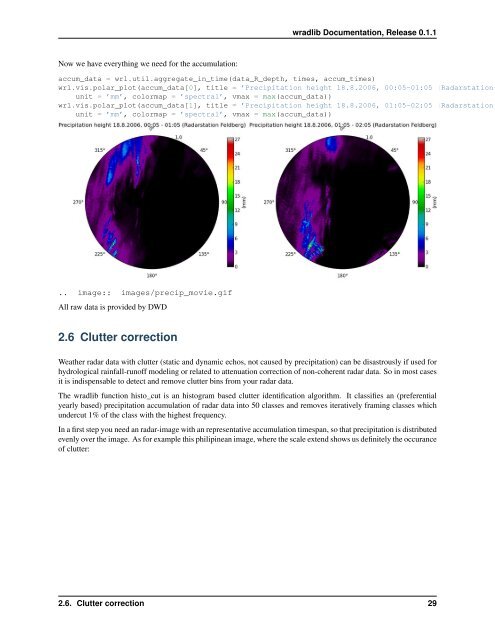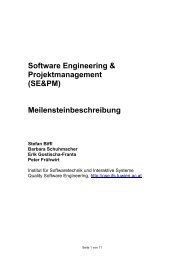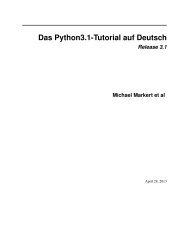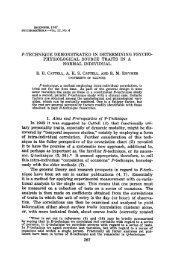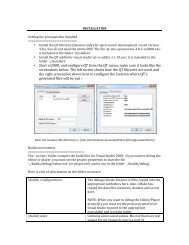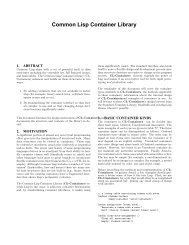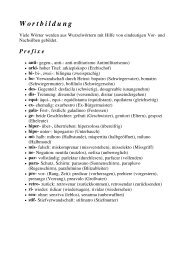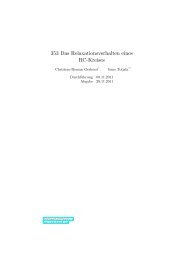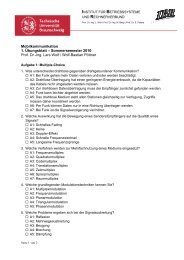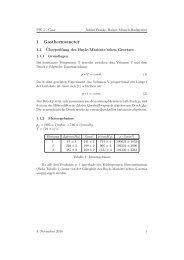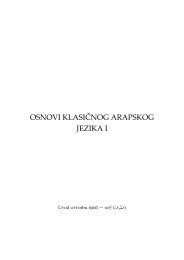wradlib Documentation - Bitbucket
wradlib Documentation - Bitbucket
wradlib Documentation - Bitbucket
Create successful ePaper yourself
Turn your PDF publications into a flip-book with our unique Google optimized e-Paper software.
<strong>wradlib</strong> <strong>Documentation</strong>, Release 0.1.1<br />
Now we have everything we need for the accumulation:<br />
accum_data = wrl.util.aggregate_in_time(data_R_depth, times, accum_times)<br />
wrl.vis.polar_plot(accum_data[0], title = ’Precipitation height 18.8.2006, 00:05-01:05 (Radarstation<br />
unit = ’mm’, colormap = ’spectral’, vmax = max(accum_data))<br />
wrl.vis.polar_plot(accum_data[1], title = ’Precipitation height 18.8.2006, 01:05-02:05 (Radarstation<br />
unit = ’mm’, colormap = ’spectral’, vmax = max(accum_data))<br />
.. image:: images/precip_movie.gif<br />
All raw data is provided by DWD<br />
2.6 Clutter correction<br />
Weather radar data with clutter (static and dynamic echos, not caused by precipitation) can be disastrously if used for<br />
hydrological rainfall-runoff modeling or related to attenuation correction of non-coherent radar data. So in most cases<br />
it is indispensable to detect and remove clutter bins from your radar data.<br />
The <strong>wradlib</strong> function histo_cut is an histogram based clutter identification algorithm. It classifies an (preferential<br />
yearly based) precipitation accumulation of radar data into 50 classes and removes iteratively framing classes which<br />
undercut 1% of the class with the highest frequency.<br />
In a first step you need an radar-image with an representative accumulation timespan, so that precipitation is distributed<br />
evenly over the image. As for example this philipinean image, where the scale extend shows us definitely the occurance<br />
of clutter:<br />
2.6. Clutter correction 29


